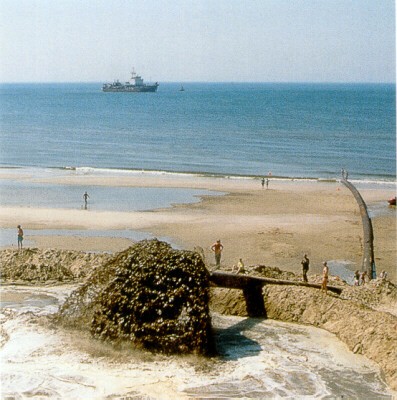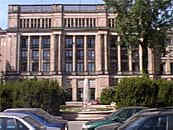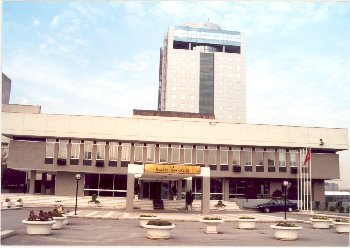|
You are here: /
The Coastal System / Infrastructure
Subsystem
The notion infrastructure has
various connotations. It refers to physical elements such
as roads, bridges, sea walls, groynes or breakwaters,
but also to the institutional infrastructure ("arrangements"). |
|
Physical infrastructure
Due to their impact on the natural system and their cost,
coastal structures are normally an important element in
coastal zone management studies. Depending on their effect
on the coastal system, the following three categories
of coastal structures may be identified:
- Sacrificial structures, often consisting of natural
materials such as sand and gravel. They are used as
a buffer to protect coastal areas from erosion. Examples
of such structures are artificial dunes, artificial
shoals and sand nourishment or beach nourishment.
These structures least interfere with the natural
processes or may even take part in it.
- Defensive structures, which are made of more resistant
materials such as clay and rock or artificial elements
like concrete. They are used to consolidate the present
position of the coastline and to protect it in the
event of extreme waves and tides. Examples are dikes
and dune revetments. These structures normally do
not interfere with natural processes, until an extreme
condition occurs. In that case, its protective function
is activated and it starts to affect the coastal processes.
- Offensive structures are designed to actively affect
the coastal processes, in order to improve conditions
for any or all of the coastal activities. They are,
therefor, constructed of artificial materials which
can withstand the forces of nature. Examples are break-waters
and groynes. Obviously, this type of structure has
a large impact on the coastal system.
|

A "sacrificial structure": a beach nourishment, Texel,
Netherlands |
Institutional Infrastructure
For an effective coastal zone management environment,
a control system is required which formulates the objectives
of coastal zone management, monitors the developments
and which takes appropriate long term and short term actions
when needed. Basically, following four elements can be
identified in this respect:
- the political system, which defines the long term
objectives of coastal zone management and the criteria
which should be applied for the analysis of various
scenarios;
- the legislative system, the total of the governing
international conventions, national laws and regional/local
regulations to enforce this policy;
- the financial system, which provides the necessary
funding;
- the executive system, which defines the scope of
responsibilities for all activities related to coastal
zone management.
Due to different historic developments, different social
and administrative cultures and different financial conditions,
each country has developed a different control system.
As the efficiency of the control system is of vital importance
for the success of coastal zone management, its particular
characteristics and responsibilities should be acknowledged
by the coastal manager. |
Some Financial insitutes...

Ministry of Finance in Poland

Ministry of Finance in Turkey |

|
|